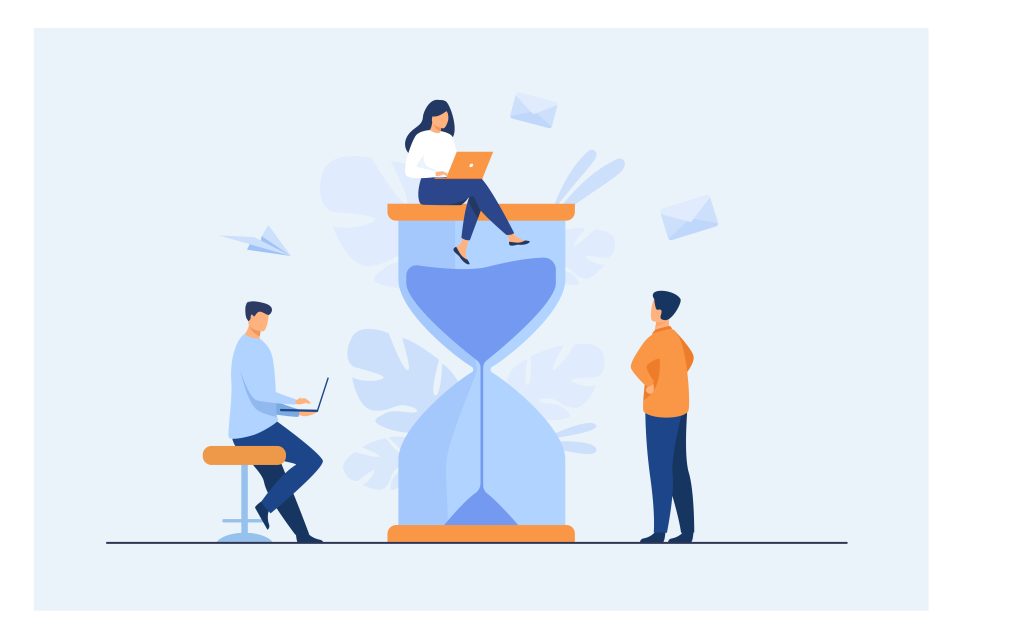
Finding the ideal survey length is a complex task. If the survey is too lengthy, participants may lose interest and stop responding. If your survey is too brief, respondents may feel rushed or that you are trying to influence the answers they provide.
Although global income is increasing, more and more consumers are experiencing what has been termed “time poverty.” Many people are overburdened with work, and time is at a premium. The few moments of downtime they get are typically snatched away while waiting for a client during a lunch meeting, on the train to work, or in line for coffee.
You have the chance to grab a customer’s attention in those split seconds. However, you risk missing out if your online survey takes too long to complete.
Can The Length Of An Online Survey Affect The Completion Rate?
Customers no longer respond to surveys while sitting in a quiet place in front of a desktop computer. Due to time constraints, 30-40% of individuals now complete surveys on mobile devices.
There are plenty of distractions, and getting sidetracked is easy. In addition to external distractions, like other people trying to contact you or sending you messages, you also have to deal with internal distractions on your device. Online surveys can drag on for a long time, and participants may eventually give up and not complete them.

And how long would that take? What is the ideal length for a survey? If possible, surveys should take no more than 10 minutes to complete. The longer the survey, the greater the probability that participants may drop out along the way.
Although, when it comes to best practices for survey length, one of the most influential factors is the number of questions you ask.
Related: Managing Survey Fatigue: Why it Happens and How to Resolve it
How Many Questions Should A Survey Have?
Many researchers face the paradox of creating survey questions without knowing the optimal number of questions to ask.
While it is impossible to provide an exact figure, you may get a better idea by thinking about how long respondents will take to complete your survey and how the different question types can impact your study.
For instance, answering open-ended questions will take longer than answering ‘yes’ or ‘no’ questions.
Thumb Rule To Calculate The Survey Length
The challenge is that there are no standard guidelines for how long a survey should be. What works for you depends on your niche and your target audience. Here is where a company needs to try things out to see what duration works best for them.
As a starting point, think about who will fill out the survey and when they will do so. Identify the difficulty level for each question and assess how much time each respondent would be willing to devote to this task. Time requirements increase proportionally with the complexity of the questions. The optimal amount of questions to include in a survey for most businesses is under 30.
Related: Proven Tips to Improve Quality of Research Surveys
Tips For Shortening Online Surveys To Increase Response Rates
1. Take it yourself
At first glance, this seems illogical. After all, isn’t the goal of any survey to discover a customer’s viewpoint? However, it’s important to review your online survey frequently to eliminate questions that may be addressed using current company data.
2. Use icons instead of extensive lists
Let’s face the truth that no one enjoys large blocks of text, especially in surveys. It has been estimated that the human brain can digest visual information up to 60,000 times quicker than text. Therefore, it’s a smart move to include images, symbols, and other visual cues in surveys to encourage people to fill them out.
3. Think about why you’re doing it
Whether its goal is to gauge market opinion or client happiness, a well-designed survey will have a distinct focus. All survey questions should be geared toward achieving that end. If it doesn’t work, throw it away.
4. Implement question routing for a more customised experience
The survey can be intelligently tailored to each respondent’s responses through routing, called skip-logic or branching. For instance, if a respondent indicates they are unfamiliar with a certain brand, the poll can skip any questions on that brand’s perceived quality.
Routing has been shown to enhance survey response rates by as much as 200%. Why? Because it improves the survey’s suitability for the respondent. They aren’t easily irritated by irrelevant inquiries. Skip-logic can also drastically shorten the time required to complete a web-based survey.
Just A Quick Caveat: When Would You Use A Lengthier Survey?
The ‘best standard’ for an online survey is 10 to 12 minutes. However, this varies widely depending on how captivating respondents find the questions. Consequently, if participants drop out of your study because they are bored, your results and sample accuracy may be affected.
So, if you feel that your subject warrants a more in-depth treatment, going for a lengthier length may be appropriate. Nonetheless, you should keep your questions engaging – perhaps even more so than with a short survey.
Looking for ways to create effective online surveys?
By combining 360-degree digital solutions, pre-built templates, and data analysis, SurveyPoint delivers an engaging experience for your respondents. Sign up to infuse your plain surveys with intuitive design and insights today!
Heena Shah – Content Writer at Sambodhi




